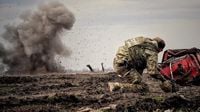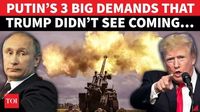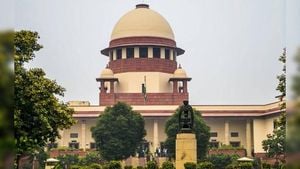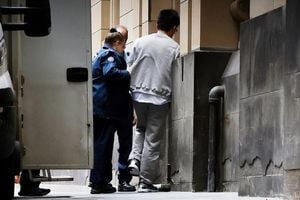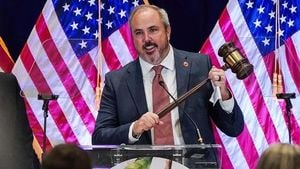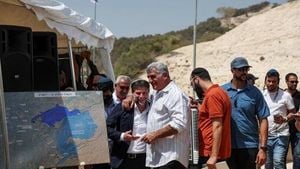In a development that’s sent shockwaves through diplomatic circles, Russian President Vladimir Putin and U.S. President Donald Trump met in Anchorage, Alaska, on August 15, 2025, for a summit that could reshape the future of Ukraine—and, by extension, the security landscape of Europe. The nearly three-hour closed-door meeting, the first Russia-U.S. summit in over four years, was dominated by intense discussions about what a peace compromise for Ukraine might look like, according to sources close to the Kremlin and reporting by Reuters.
At the heart of the talks were three core demands from Putin, which he outlined as prerequisites for ending the war that has raged for more than three years: Ukraine must surrender the remaining parts of the eastern Donbas region it still controls, renounce its ambitions to join NATO and remain neutral, and keep all Western troops off its territory. These terms, as reported by Reuters and corroborated by multiple sources familiar with Kremlin thinking, represent a scaling back from Putin’s earlier territorial ambitions. In June 2024, Moscow’s demands included the full cession of Donetsk, Luhansk, Kherson, and Zaporizhzhia provinces—four regions Russia claims as its own. But now, the focus has narrowed mainly to Donbas, with Russia currently controlling about 88% of that region and 73% of Kherson and Zaporizhzhia, according to U.S. estimates and open-source data cited by Reuters.
In a potential gesture toward compromise, Russian sources told Reuters that Moscow is willing to return small portions of the Kharkiv, Sumy, and Dnipropetrovsk regions it currently holds, should a peace agreement be reached. However, Putin remains adamant that Ukraine’s military must be limited and that no Western boots should be deployed on Ukrainian soil—not even as peacekeepers. "Putin is ready for peace—for compromise," a Kremlin source told Reuters. "That is the message that was conveyed to Trump."
Yet, as the summit concluded, the gulf between the Russian and Ukrainian positions appeared as wide as ever. Ukrainian President Volodymyr Zelensky, speaking on August 21, 2025, rejected the idea of ceding internationally recognized Ukrainian land, especially the Donbas region, which he described as a “fortress” crucial for the nation’s survival. “If we’re talking about simply withdrawing from the east, we cannot do that,” Zelensky said, according to Reuters. “It is a matter of our country’s survival, involving the strongest defensive lines.”
Zelensky also pushed back on Russia’s demand that Ukraine abandon its NATO aspirations, emphasizing that joining the alliance is a strategic objective enshrined in Ukraine’s constitution. "It is not up to Russia to decide on the alliance’s membership," he insisted, as reported by Reuters. The Ukrainian Foreign Ministry had no immediate comment on the specific proposals, but Kyiv’s stance has been unwavering: no surrender of land and no compromise on sovereignty.
The days following the Alaska summit have seen a surge in Russian military activity. On August 21, a massive overnight Russian airstrike targeted an industrial facility in Mukachevo, western Ukraine—evidence, perhaps, that the path to peace remains fraught with violence and uncertainty. Images released by the Zakarpattia Region Prosecutor’s Office and EPA/Shutterstock show the aftermath of the attack, underscoring the ongoing cost of the conflict.
Diplomatic efforts, however, have not ceased. On August 18, Zelensky met with Trump at the White House, joined by European leaders including German Chancellor Friedrich Merz, French President Emmanuel Macron, and British Prime Minister Keir Starmer. According to Reuters and German media, Merz revealed that Putin and Zelensky could potentially meet in person within the next two weeks. During a pause in the discussions with European leaders, Trump reportedly called Putin, who "agreed that there would be a meeting between the Russian president and the Ukrainian president within the next two weeks," Merz stated. Trump, for his part, expressed optimism, posting on Truth Social that the talks marked a "very good, early step for a war that has been going on for almost four years." He added, "At the conclusion of the meetings, I called President Putin, and began the arrangements for a meeting, at a location to be determined, between President Putin and President Zelenskyy. After that meeting takes place, we will have a Trilat, which would be the two Presidents, plus myself."
Still, skepticism abounds. Russian Foreign Minister Sergey Lavrov told NBC News on August 22 that while Putin is "ready to meet with Zelenskyy when the agenda is ready for a summit, and this agenda is not ready at all." Lavrov accused Ukraine of stalling the process, while also questioning Zelensky’s authority to sign a peace deal, given that his term was due to expire in May 2024—a point Kyiv disputes, arguing that the war has prevented a new election and that Zelensky remains legitimate.
Meanwhile, Trump has threatened "massive" sanctions and tariffs if Putin and Zelensky fail to set up a meeting for peace negotiations. "I’ll see whose fault it is. If there are reasons why, I would understand that," Trump said, according to Reuters. The former president has made it clear he wants to end what he calls the "bloodbath" of the war, aiming to be remembered as a "peacemaker president."
The stakes are enormous. Russian forces currently control about one-fifth of Ukraine—an area roughly the size of the U.S. state of Ohio, according to U.S. estimates. The war, now in its fourth year, has killed and injured hundreds of thousands and displaced millions. As political scientist Samuel Charap of RAND told Reuters, any requirement for Ukraine to withdraw from Donbas remains a "nonstarter" for Kyiv, both politically and strategically. "Openness to ‘peace’ on terms categorically unacceptable to the other side could be more of a performance for Trump than a sign of a true willingness to compromise," Charap said. "The only way to test that proposition is to begin a serious process at the working level to hash out those details."
Behind the scenes, Trump’s special envoy Steve Witkoff has played a pivotal role in facilitating dialogue. Witkoff reportedly met with Putin in the Kremlin on August 6, laying the groundwork for the Alaska summit and the current push for peace. Options for a formal deal are being considered, ranging from a three-way Russia-Ukraine-U.S. agreement recognized by the U.N. Security Council to a revival of the failed 2022 Istanbul agreements, which envisioned Ukrainian neutrality in exchange for security guarantees from the five permanent members of the Security Council.
As one Kremlin source put it, “There are two choices: war or peace, and if there is no peace, then there is more war.” For now, the world watches and waits to see whether a breakthrough is possible—or whether the violence will grind on, with no end in sight.
